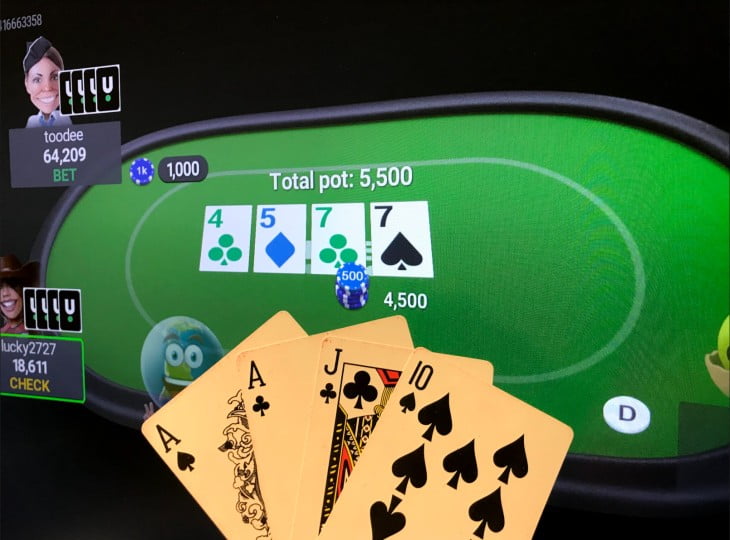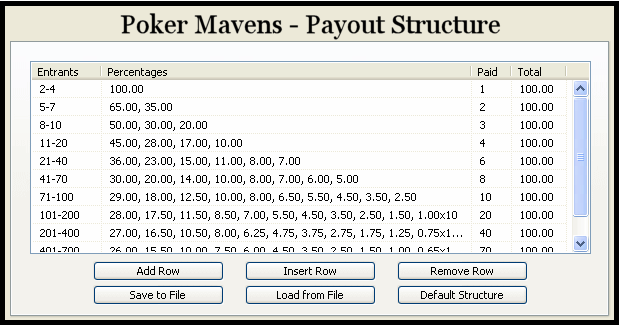Omaha Starting Hand Rankings
Most Commonly Asked Poker Questions
Starting Hand Ranking in Omaha Hi According to Edward Hutchinson. Unlike holdem poker in which winning combination may be formed using two, one or none of hole cards in Omaha there have to be used two hole and three community cards. On those who play Omaha after playing holdem poker these four cards play a mean trick. Omaha Odds and Starting Hand Ranking for All Starting Hands. There are 270725 different combinations possible. Odds for 33 different categories. Omaha Hi Lo Starting Hands Best Starting Hands in Omaha Hi Lo. Omaha and Omaha Hi Lo is a much more complicated game then Hold’em simply because you have a wider range of starting hands seen.
Not sure what beats a full house or what a straight can beat? Here are the answers to the most commonly-asked poker questions this side of the Strip.
Does a flush beat a full house?
No. A full house beats a flush in the standard poker hand rankings. The odds against making a full house in a game of Texas Hold’em are about 36-to-1, while the odds against making a flush are 32-to-1. The full house is a more rare hand and beats a flush.
Does a flush beat a straight?
Yes. Using the standard poker hand rankings, a flush beats a straight, regardless of the strength of the straight. The odds against making a straight in Texas Hold’em are about 21-to-1, making it a more common hand than a flush (32-to-1 odds against).
Does a straight beat a full house?
No. The odds against making a full house in Texas Hold’em are about 36-to-1, while the odds against making a straight are about 21-to-1. Both are strong five-card hands, but a full house occurs less often than a straight. A full house beats a straight in the poker hand rankings.
Does three of a kind beat two pair?
Yes. Both three of a kind and two pair can make a lot of money in poker, but three of a kind is the best hand when it goes head to head with two pair. The odds against making three of a kind in Texas Hold’em is about 20-to-1, while the odds against making two pair is about 3-to-1.
Does three of a kind beat a straight?
No. The odds of making both of these hands are very close in a game of Texas Hold’em. The odds against making a straight are 20.6-to-1, while the odds against making three of a kind are 19.7-to-1. The straight comes about slightly less often, making it the winner against three of a kind in the poker hand rankings.
Omaha Starting Hand Chart
Does a flush beat three of a kind?
Yes. The battle of strong hands between a flush and three of a kind sees the flush as the stronger hand. The odds against making a flush in Texas Hold’em are about 32-to-1, with odds against making three of a kind at around 20-to-1.
Does a straight beat two pair?
Yes. The poker hand rankings dictate that a straight is a stronger hand than two pair. The straight occurs with about 21-to-1 odds against in Texas Hold’em, while the odds against making two pair stand at about 3-to-1.
Does four of a kind beat a full house?
Yes. Both four of a kind and a full house are among the strongest poker hands, but four of a kind is a much rarer holding. Texas Hold’em odds against making four of a kind are 594-to-1, while you have about 36-to-1 odds against making a full house.
Does three of a kind beat a flush?
No. When the flush and three of a kind go head to head, the flush comes out as the best according to the poker hand rankings. The odds against making three of a kind sit around 20-to-1, with the odds against hitting a flush at 32-to-1.
Does a full house beat a straight in poker?
Yes. The full house comes in less often than a straight. In Texas Hold’em, the odds against drawing a full house are around 36-to-1, while the odds against making a straight are around 21-to-1.
Does a straight flush beat four of a kind?
Yes. Four of a kind is an exceedingly rare hand in poker, but the straight flush is an even more elusive five-card hand. The odds against making a straight flush in Texas Hold’em is about 3,590-to-1, much rarer than four of a kind (594-to-1 odds against)
Doctor of Psychology and acclaimed Omaha Hi-Lo player Dr Ed Hutchinson first came up with a ‘Point Count’ system for starting hand selection back in 1997. The idea is to give a statistically derived value for both high and low possibilities in Omaha hi-lo starting hands – based on their expected profitability in below average games (i.e. not full of experts).
Here we outline Hutchinson’s Point Count System for Omaha Hi-Lo Starting hands and discuss its pros and cons for online Omaha Hi-Lo games – both fixed limit (which the system was designed for) and the newly popular pot-limit Omaha hi-lo games. : If you are new to the game you might not know that there is a software tool designed to help with exactly this area of play… we explain how Omaha Indicator can bring big rewards at the bottom of this article.
In the interests of credit where credit is due you can find an overview of the points count system on Dr Hutchinson’s website via this link: Dr Hutchinson’s Point Count System.
The Point Count Method For Omaha Hi-Lo Starting Hands
Firstly the point count method identifies whether your hand qualifies as a ‘high only’ hand, the criteria for this are naturally very strict – with 4 cards 10 or above required plus some other features such as a pair + 2 suited cards, 2 pair or double-suited unpaired cards.

If your hand is not ‘high-only’ then 4 steps are carried out which result in a number being assigned to your hand. These are summarized below:
Omaha-8 Point Counting System Step #1:

Take the two lowest cards in your hand and assign points based on the chart.
Omaha Poker Hand Rankings
A-2 = 20 points
A-3 = 17 points
A-4 = 13 points
A-5 = 10 points
2-3 = 15 points
2-4 = 12 points
3-4 = 11 points
4-5 = 8 points


Omaha-8 Point Counting System Step #2:
Omaha Starting Hand Rankings
The next step involves assessing only the remaining 2 cards which are not your lowest, cards which are the same as those already used in step 1 should not be assigned any points in step 2 (so, if you have A-3-3-X then do not assign points for the 3 at this stage).
Any 3 = 9 points
Any 4 = 6 points
Any 5 = 4 points
Any Jack, Queen or King = 2 points
Any 6 or 10 = 1 point
Omaha-8 Point Counting System Step #3:
Now extra points are awarded for any pairs – if you also have a 3rd card matching the pair then only assign half of the points noted.
Pair of Aces = 8 Points
Pair of Kings = 6 Points
Pair of Queens = 5 points
Pair of Jacks = 2 points
Pair of Tens, Fours or Threes = 1 point
Pair of Twos = 3 points
Omaha-8 Point Counting System Step #4:
Finally we take the suitedness of the cards into account, the caveat here is that if you contain 3 cards of one suit then you can only assign half of the score given, 4 cards of the same suit mean that no points at all are assigned here. If your hand is double suited then assign points for both suits.
Suits are given points based on the highest suited card:
Ace + = 4 points
King + = 3 points
Queen or Jack + = 2 points
Eight, Nine or 10 + = 1 point
Finally we total up the scores and decide whether to play based on the simple rule:
20 Points or more (or high only) = Play This Hand
30 Points or more = Consider Raising With This Hand
The Point Count Method For Omaha Hi-Lo Starting Hands – Is It Any Good?
One aspect of Dr Hutchinson’s Omaha Hi-Lo points count system which immediately stood out for us is the strictness of the criteria for high-only hands. A common error for those players new to hi-lo is to play too many high hands in addition to the lows. While Hutchinson’s criteria of all cards above 10 are very strict, they do highlight the danger of playing too many high-hands. We suggest to loosen the high-only criteria for experienced players from later position only.
Hutchinson’s system is a little too complex for ease of use at the tables, especially with the fast pace of today’s online games. What is does very well is to show that, while the low-only portion is vital for good starting hand selection, it is the accompanying cards and the amount they assist which will often make the difference between a playable and an unplayable hand.
With A-2 hands being considered playable with no further help, there is a danger that newer players could overvalue those ‘bare A-2’ hands such as A-2-9-Q no suits, which can easily be counterfeited or lead to getting quartered. We would thus prefer some ‘low / junk’ reduction in points in an ideal world. Of course this depends on each player’s ability to release a hand after the flop where the situation warrants this.
Finally we would suggest that pot-limit Omaha hi-lo games require slightly stricter pre-flop criteria than those ones Ed Hutchinson recommends. With the pre-flop bets small compared to the amount to be won, the temptation is to play more hands in pot-limit. However, the kind of hands which can call pot sized bets on later streets simply must have scoop potential in the pot-limit game due to exponential bet sizes. In the fixed limit game you can often call turn and river bets for only part of the pot.

To summarize, a great system for those new to Omaha Hi-Lo and we strongly suggest saving some hand histories and comparing the scores that the starting hands achieve. The loose and passive online Omaha games can be easily beaten by those with the discipline to stick to the best starting hands – and Dr Hutchinson’s system is a great way of assessing these.
What Is The Best Omaha Starting Hand
Get A Profitable Head-Start With The Leading Omaha Software Tool
Omaha Hand Calculator
Omaha Indicator will categorize your starting hands, provide real-time 100% accurate odds and outs information and even profile your opponents based on the hands they play. This leading software tool is approved by more than 150 poker sites – including the ‘majors’. If you really want to give those profits and instant boost we recommend you check out Omaha Indicator for yourself now!